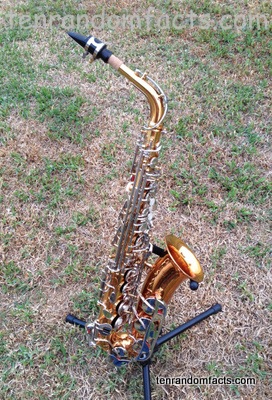“The potential for the saxophone is unlimited.” Steve Lacey
- Saxophones are usually a curved, hollow, metal cylinder, with a bell, keys and a mouthpiece with a reed, and different variations and alterations can make different sounds.
- A ‘Saxophone’ is also known as a ‘sax’, while those who play the instrument are known as ‘saxophonists’.
- Saxophones are musical instruments of woodwind class, although though are generally made of brass.
- In 1840, Adolphe Sax, an instrument maker from Belgium, invented the saxophone to bring balance to the combination of woodwinds, brass, and strings, and in the few years following, they were marketed in Paris.
- Saxophones were first patented in 1846, with a range of 14 instruments that included an E flat and F sopranino, and an E flat and F contrabass, and also other instruments pitched in C and F, as well as the B flat and E flat saxophones that are commonly used today.
- Saxophones became the subject of modification from 1866, due to Sax’s expired patent; with multiple changes to the keys and a major addition of the F# key.
- Saxophones are most commonly used in jazz and classical music genres, and are very commonly used in military bands and jazz bands.
- There are nine instruments in the family of saxophones, all typically pitched in E or B flat, and the most common are, from smallest to largest, soprano, alto, tenor and baritone.
- Saxophones are generally coated with an acrylic lacquer or often plated with silver to stop the brass from discolouring, but nickel and gold are also used to coat the instrument.
- Soprano saxophones are usually straight, rather than the typical curved shape, and other straight sax instruments are also available, including the saxello, which has a curved top and a tilted bell.
Bibliography:
The History of the Saxophone, 2014, The Saxophone.com, http://www.the-saxophone.com/history-of-the-saxophone.html
Saxophone, 2014, Wikipedia, http://en.wikipedia.org/wiki/Saxophone








Are you learning to play one at school?